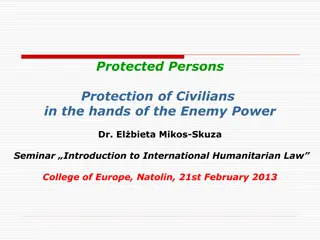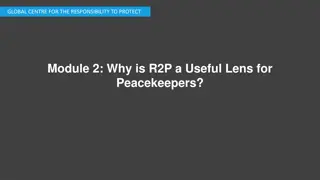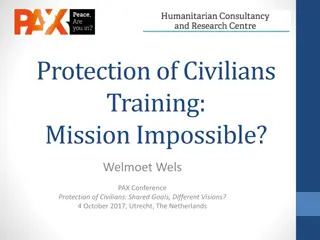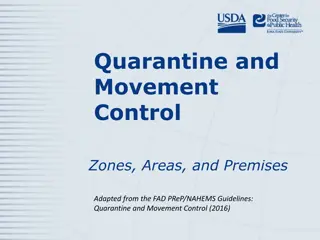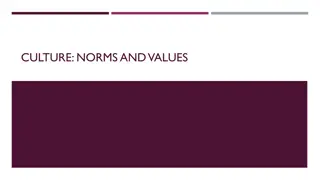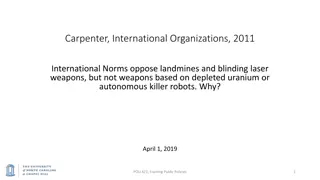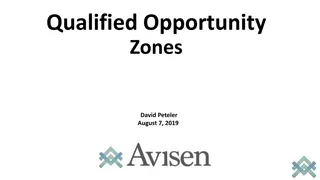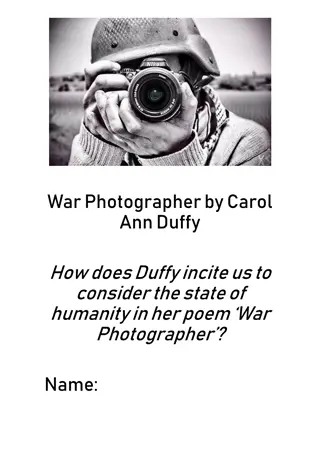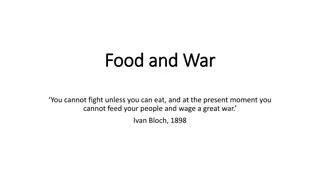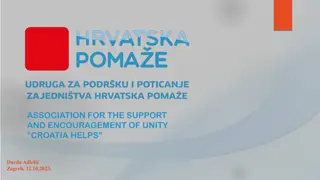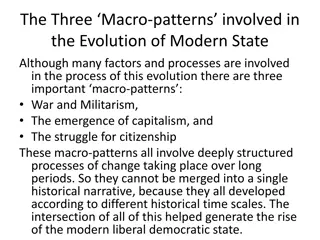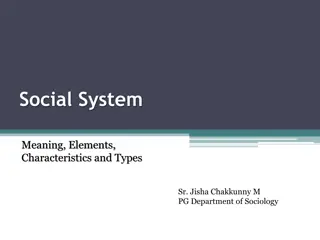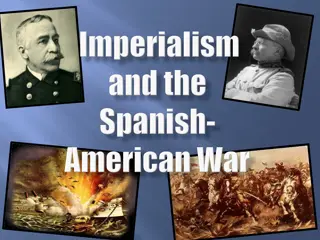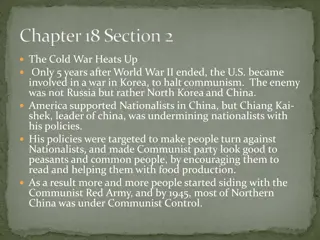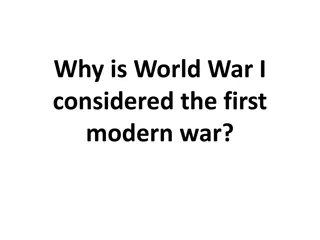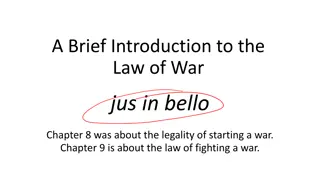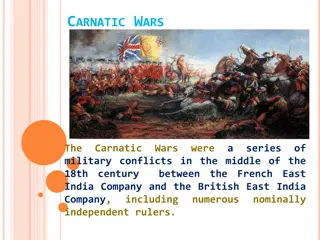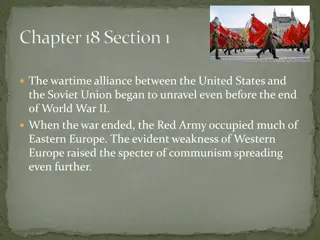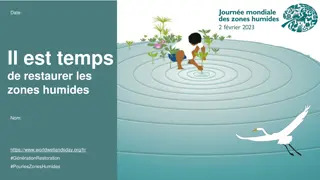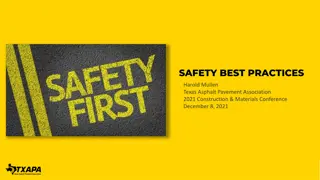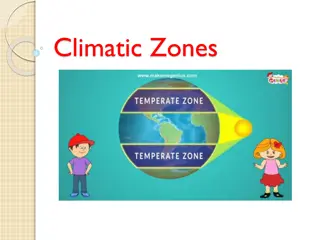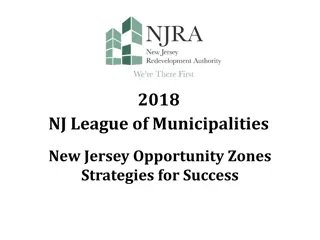Protecting Civilians in War Zones: The Evolution of International Norms
The discussion delves into the shifting focus on protecting civilians in war zones, emphasizing the historical treatment of men and boys as combatants, thus justifying their harm. The framing of policies, the role of humanitarian networks, and the challenge of promoting accurate norms over convenient ones are explored. The narrative reflects on the complexities and moral dilemmas involved in advocating for the safeguarding of vulnerable populations during armed conflicts.
Download Presentation

Please find below an Image/Link to download the presentation.
The content on the website is provided AS IS for your information and personal use only. It may not be sold, licensed, or shared on other websites without obtaining consent from the author. Download presentation by click this link. If you encounter any issues during the download, it is possible that the publisher has removed the file from their server.
E N D
Presentation Transcript
Carpenter, Protection of Civilians as a Transnational Issue, International Studies Quarterly, 2005 November 13, 2019 POLI 421, Framing Public Policies 1
Protecting women and children What about the men and boys? Men get summarily executed Boys get recruited to serve in the army Boys and men, as civilians, have their rights violated or are killed Women and girls also suffer, of course. But it s easier to sell and promote the idea of a norm protecting vulnerable populations if limited to women and children POLI 421, Framing Public Policies 2
Laws of war (p. 296) Civilians must be spared Combatants may be legitimately be killed How to tell the difference? If they participate directly in hostilities But this gets turned into a proxy: Women and children, perhaps the elderly, are civilians Men and boys are combatants That s both inaccurate and a moral failing Innocent men and boys then can be killed as acts of war; not seen as a moral outrage. POLI 421, Framing Public Policies 3
Her argument, p. 297 network actors have attempted to establish a frame that resonates with the moral language familiar to international donors, belligerents, and the media, and that is acceptable to political allies in the women s network. POLI 421, Framing Public Policies 4
Norms can be dysfunctional The international community of human rights activists finds it easier to push this norm than one that is more accurate: protect civilians. Note: a key element here is that it is acceptable to the belligerents they want to be able to treat all men as combatants, so they can be killed. Human rights activists find ways to devote their moral outrage in those areas where the world s largest armies will accept it. Recall Bachrach and Baratz (1962) argument about limiting the agenda only to those decisions that are comparatively inconsequential POLI 421, Framing Public Policies 5
Protecting civilians in war zones, a new idea More attention to this issue only in the 1990s International humanitarian network promotes this idea (Note: the network is an amorphous group of states, IO s, and NGO s.) UN Office for the Coordination of Humanitarian Affairs, UN OCHA, a key actor Great to promote this new ideal, fantastic. But how was it framed? POLI 421, Framing Public Policies 6
UN OCHR focuses on women and children POLI 421, Framing Public Policies 7
Other evidence in the article reinforces the point References to how vulnerable mothers, babies, women, children are Women are mothers / peacemakers. Men are warmakers Occasional reference to the elderly (including men) and those with disabilities (including men) Generally, however, a powerful essentialism that excludes men from a protected class. POLI 421, Framing Public Policies 8
A certain irony Traditionally, human rights law and discourse privileged able-bodied adult men rather than women or children , [but] precisely the opposite has historically been true with respect to the protection afforded by the civilian immunity norm (p. 302) That is, finally women are the privileged class here; men are the second class ones here... POLI 421, Framing Public Policies 9
Two questions then to discuss First, why did this happen? Let s list the reasons for it, from her article and you can also add more Take some time and think of 3 reasons, and I ll compile on the board POLI 421, Framing Public Policies 10
Second, how could you shift the frame, if you disagree with it? Perhaps you think this frame is fine; what are the reasons why it s appropriate, let s list them. If it is inappropriate, what would be the arguments to protect those who are not directly involved in hostilities, no matter their gender? Think of arguments / frames and I ll compile on the board. POLI 421, Framing Public Policies 11
Why did I make you read all this Carpenter stuff? (She has another great chapter / article about why some types of weapons are banned or deemed immoral but others are not.) Frames aren t automatic. Someone has to make them. They need resources; these are not widely shared. Agendas, even of well-meaning human rights oriented organizations, are crowded. If you try to reframe issue X, you cannot simultaneously reframe issue Y. But many issues may deserve attention / reframing. Therefore, to understand framing, we also need to understand power. POLI 421, Framing Public Policies 12


